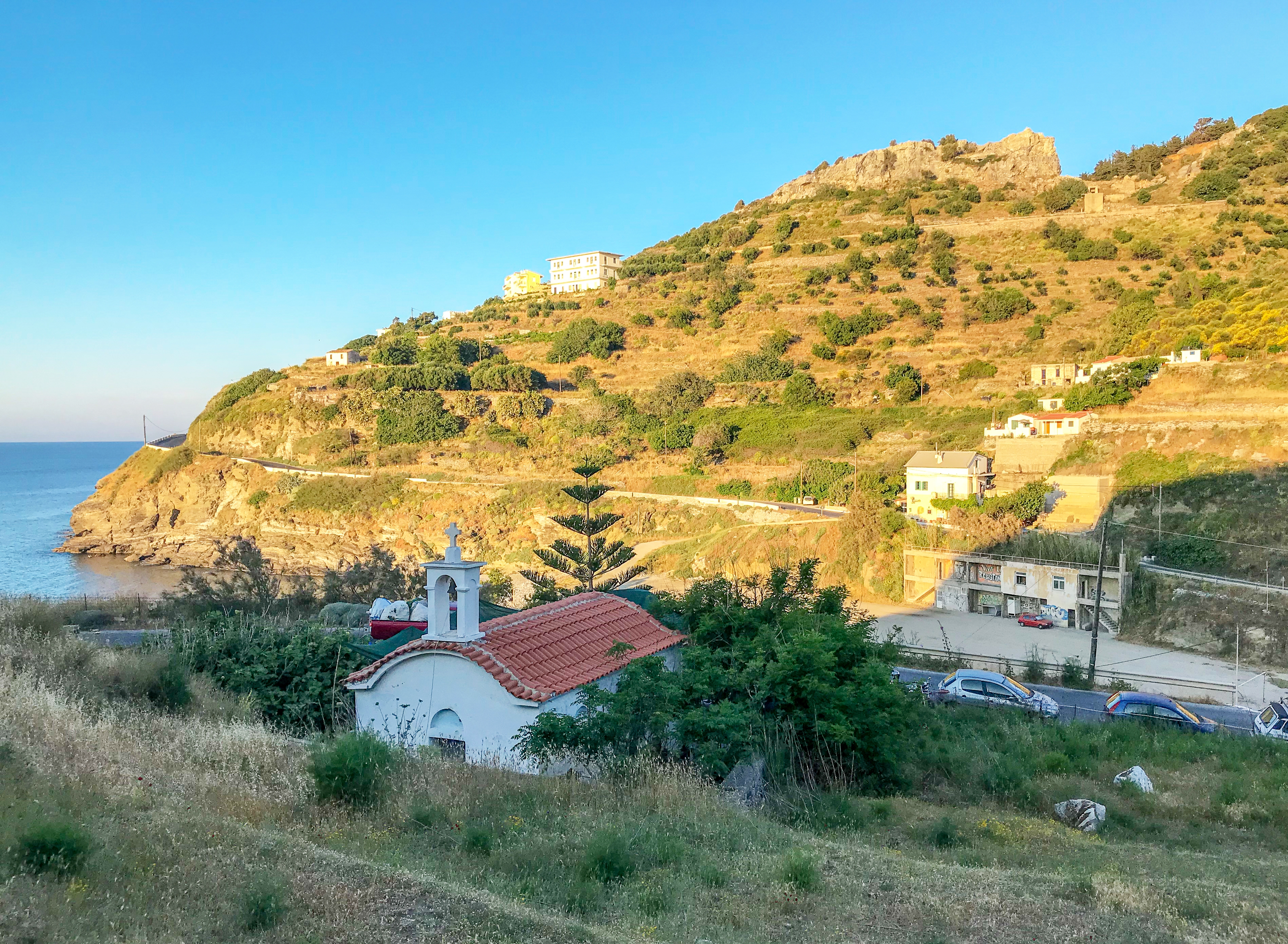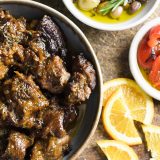The music begins just as the feast reaches a crescendo outside the whitewashed, minuscule Orthodox church. Empty plates pile on long tables, fingers greasy, plastic bottles of homemade ruby-red wine flowing freely.
With a belly full of stewed goat, I’m pulled onto the dance floor in front of a trio of violin, acoustic guitar and wide-bellied bouzouki. We link hands in a circle and spin, and I struggle to stay upright while matching the intricate footwork of my dance partners.
Called a panigyri, it is one of dozens of church festivals held each year on Ikaria, the only thing approaching a nightlife on the sleepy Greek island. I was exploring Ikaria and Crete, another island at the opposite end of the Aegean Sea, trying to better understand the sweet-savory undercurrent at play in so much of the islands’ foods. Baked chickpeas with tomatoes and grape molasses. Braised lamb sweetened with chocolatey carob. Octopus drizzled with honey and lemon. Each time, the dish was sweeter than I anticipated, but still balanced and never cloying.
On this night, more than a hundred people cram into the tiny church courtyard, spilling onto the serpentine coastal road. A smattering of the nonagenarians Ikaria is known for mix with young men obviously flirting with more eligible women. Over the course of several hours, the band never breaks, the dancing continues, and more food appears from reused plastic containers brought from homes. Sautéed goat liver. Vinegary tiny anchovies eaten whole. Crunchy breadsticks covered in seeds. Simple salads dressed in lemon and olive oil.
One of my dance partners, Popi Karnavas, had closed her restaurant for the day so she could make a whole goat for the party. The meat was simple yet succulent, but I’m told her real talents are better displayed at her restaurant across a rocky cove from the church.
So I return the next day for lunch under an arbor twisting with grape vines at the seaside restaurant To Inomagirio tis Popis. Another feast ensues, accompanied by another homemade wine, this one honey-colored, cloudy and tasting better than its vinegary smell. New potatoes poached in olive oil with goat cheese and oregano. A crispy, oniony pie stuffed with piles of wild dill. Stewed rooster with orange and peppers. Chilled beets topped with honey, aged vinegar and sautéed sea fennel.
Across them all, that balance of sweet and savory I was searching for. But the standout, the dish in which the interplay was most pronounced? Juicy chunks of seared pork simmered in a sage-honey sauce, the sweetness offset by the sharpness of red onion and green and red pepper.
Karnavas wouldn’t divulge the recipe for the pork, a family secret known only to her mother and son. But I knew it was part of a broad category of dishes called tigania, a common meat meze—or small bite—prepared in a skillet (or a tigani in Greek).

To better understand this dish in particular—and these flavor combinations more broadly— I meet with Diane Kochilas, a New York-born chef with an encyclopedic understanding of Greek cuisine and part-time resident of Ikaria. Among her many accomplishments and books—a 12-volume dictionary of Greek cuisine and one television series each in Greece and the U.S.
I met Kochilas in the main square of Agios Dimitrios, an inland village where she hosts a seasonal cooking school at her house. We head to the town butcher, who cuts off a pound of pork shoulder and slices it into 2-inch chunks. Outside in the flagstone square, ringed with rustic tavernas and silvery olive trees, a man with a bullhorn hollers about his sale on fresh fish.
At her house a few minutes away, Kochilas moves through the airy kitchen with an ease that makes clear she’s taught home cooks for nearly 30 years. She covers the bottom of a skillet in olive oil, then chops red onion and leeks while it heats, eyeballing the ingredients. “I never quite follow my own recipes,” she says.
The leeks and onions cook down, then she stirs in minced garlic, assuring that it doesn’t burn, before emptying the pan to brown the pork. It’s left to sear mostly undisturbed in the smoking pan until it develops a dark crust. The leek mixture goes back in along with about a cup of white wine, which simmers just long enough to burn off the alcohol before she lowers the heat. In go bay leaves and rosemary, picked from the garden outside, plus red pepper flakes, star anise and long strips of orange zest—the first of two sweet elements that play off the savory in this recipe.
The pork simmers, covered, until the fat begins to render, with Kochilas occasionally adding a bit of water so the bottom doesn’t scorch. Each time she lifts the lid, a surprisingly aromatic cloud of orangey steam plumes out of the pan. Finally, she drizzles in a heaping spoonful of dark Ikarian honey, covers the pan again, and the pork cooks into tender nuggets, coated in a glaze rich with orange and herbs.
Recreating the dish back at Milk Street required only minor adjustments to ensure reliable results and to substitute for more available ingredients. The honey in Ikaria, for instance, is exceptionally dark and rich, so we settled on buckwheat honey, adding some near the beginning of cooking to help darken the sauce and finishing with the remainder to keep its flavor fresh.
A splash of orange juice bumped up the zest’s flavor, and cider vinegar enhanced the fruitiness while balancing the sweetness. Though Kochilas cooked hers completely on the stovetop, we browned the pork in batches and finished it covered in the oven. Removing the cooked pork and reducing the sauce at the end concentrated the flavor and created a nice glaze. A dish bearing all the hallmarks of Greek balance between sweet and savory.




